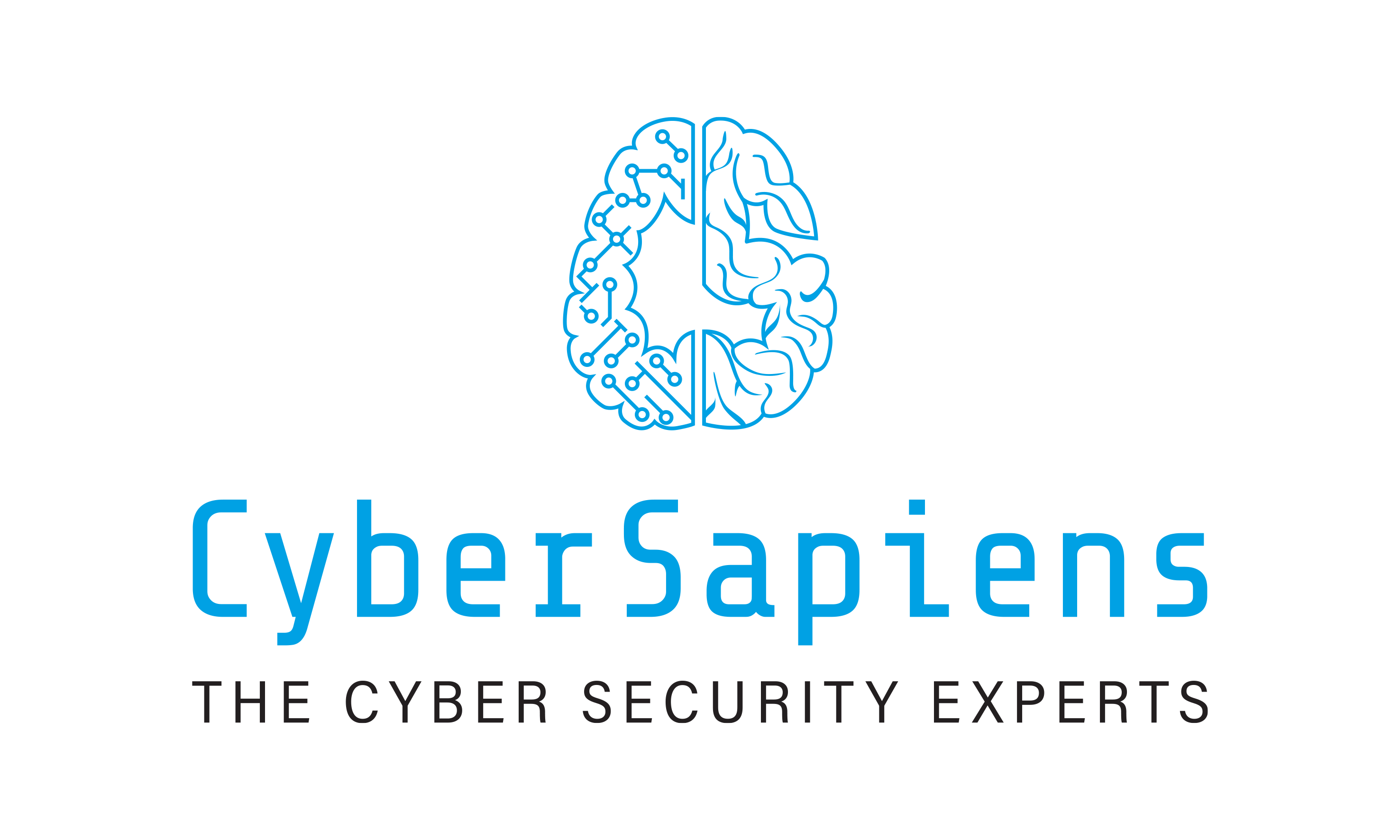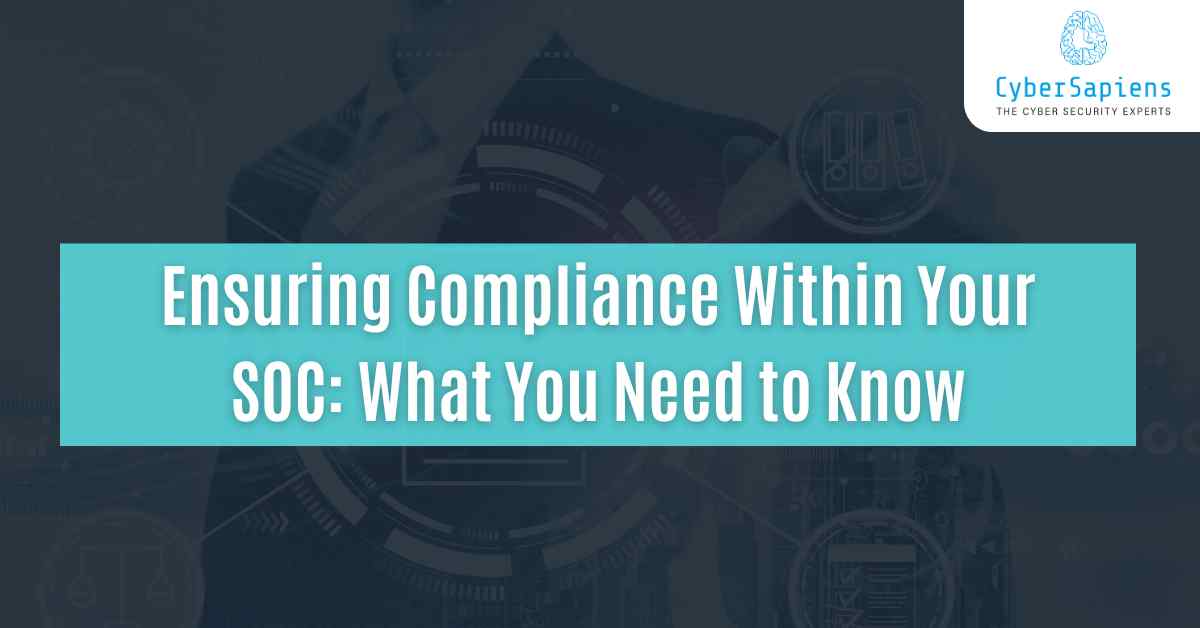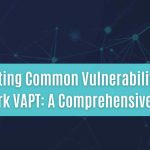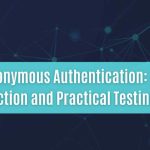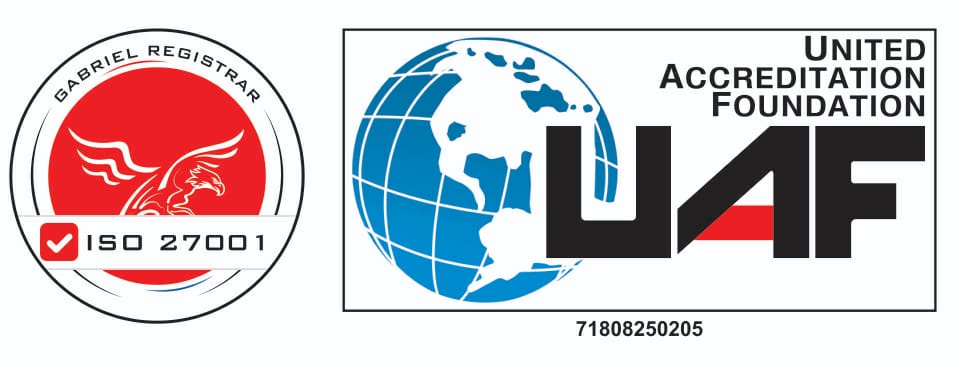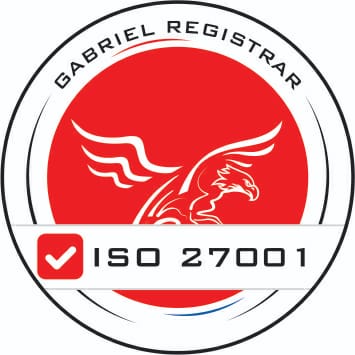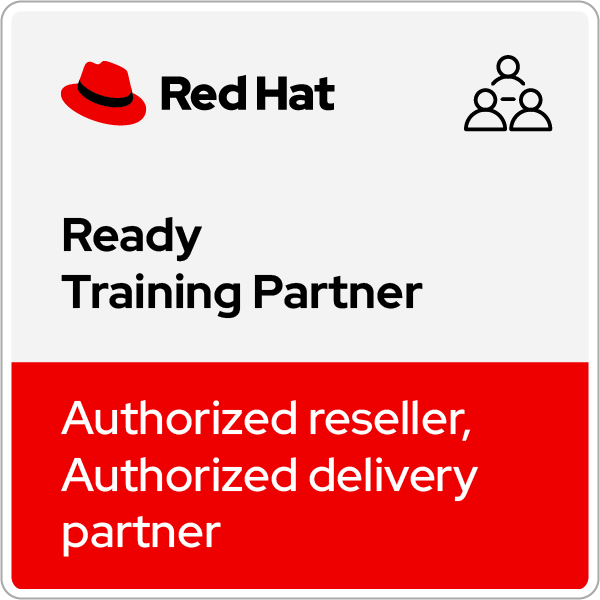In today’s cybersecurity world, compliance isn’t just a requirement—it’s a necessity. For any organization with a Security Operations Center (SOC), adhering to regulations is crucial for legal safety, building customer trust, and strengthening your overall security stance.
But compliance isn’t just about ticking boxes; it’s about ensuring that your SOC runs smoothly while meeting industry standards. In this blog, we’ll dive into why compliance matters for SOCs, the common challenges businesses face, and how you can stay ahead with a few key strategies.
Why Compliance is Crucial for Your SOC?
Compliance isn’t just a legal mandate it’s a trust signal. Regulations like GDPR, HIPAA, PCI-DSS, and ISO 27001 are in place to protect data and ensure that organizations are accountable.
For SOCs, this means being equipped to detect and respond to threats while also complying with these standards. Failure to do so can lead to costly penalties, a damaged reputation, and loss of business.
Key Regulations That Impact SOCs
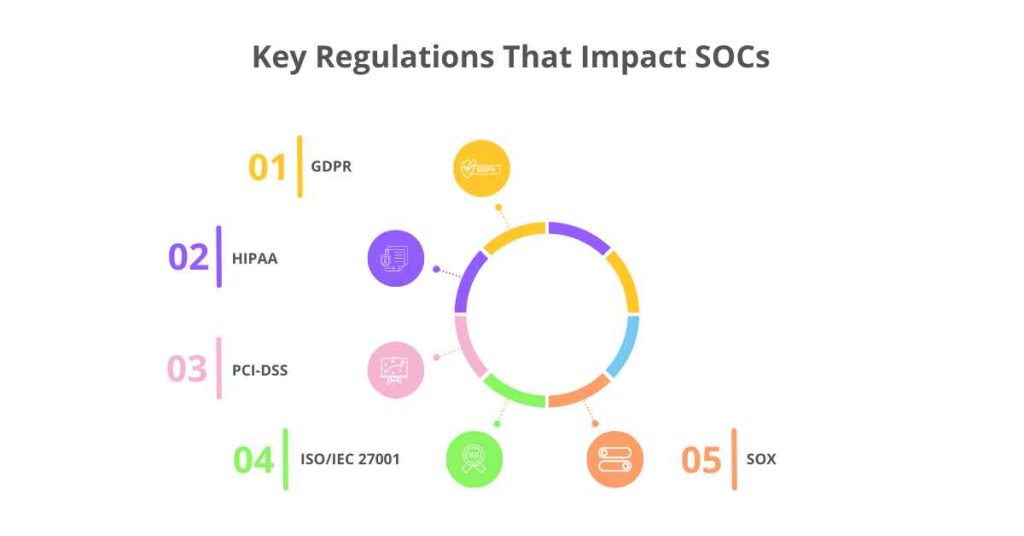
Depending on your industry and region, different laws and standards might apply to your SOC. Here are some common ones:
1. GDPR (General Data Protection Regulation)
Enforces strict data privacy measures for any organization handling EU citizens’ data. SOCs must ensure they have appropriate monitoring, logging, and breach notification protocols in place.
2. HIPAA (Health Insurance Portability and Accountability Act)
It requires healthcare organizations to implement safeguards to protect sensitive health information. SOCs in this sector need stringent data handling and encryption practices.
3. PCI-DSS (Payment Card Industry Data Security Standard)
Affects organizations processing credit card payments. SOCs must ensure that data flows, logs, and network security are tightly controlled to avoid breaches.
4. ISO/IEC 27001
An international standard for information security. SOCs can leverage this as a framework to build an Information Security Management System (ISMS) and ensure they meet security compliance.
5. SOX (Sarbanes-Oxley Act)
Primarily focuses on financial reporting and data integrity. SOCs must monitor internal controls and audit trails for organizations in the finance sector.
Steps to Build a Compliance-Ready SOC
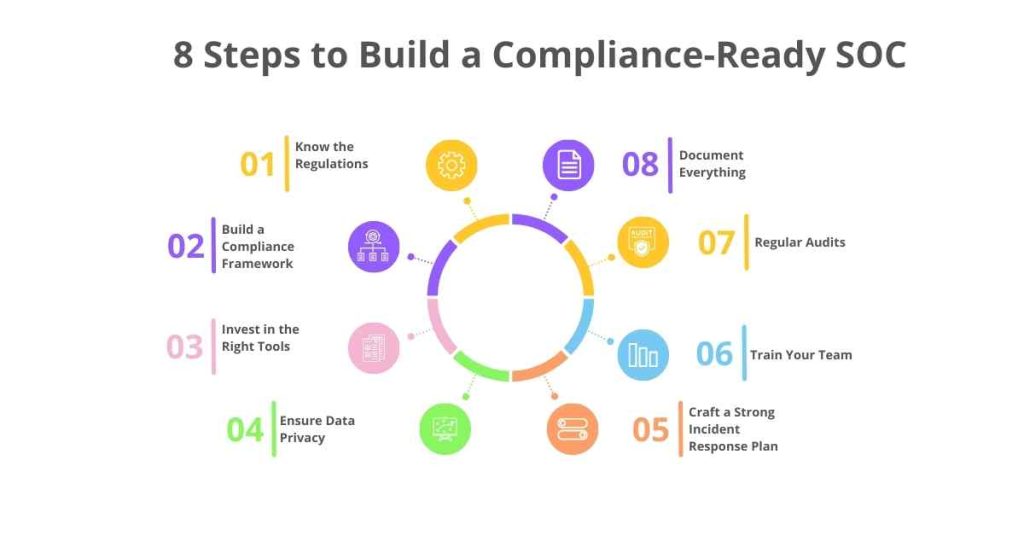
1. Know the Regulations
Before anything else, you need to understand the regulations that apply to your organization. Whether you’re in healthcare, finance, or retail, different rules may govern how you handle data. Consulting legal experts can ensure your SOC is on the right path.
2. Build a Compliance Framework
Create a clear framework that outlines how your SOC will handle monitoring, data logging, incident response, and reporting. By defining these processes, your team can handle incidents confidently while staying compliant.
3. Invest in the Right Tools
Compliance often requires real-time visibility into your systems, with tools that help track and audit activity. SIEM (Security Information and Event Management) tools are great for log collection, while GRC (Governance, Risk, and Compliance) tools help manage and monitor compliance efforts.
4. Ensure Data Privacy
A core part of most regulations is data protection. This means encrypting data at rest and in transit, controlling access, and keeping sensitive data secure. Make sure that your SOC’s data management practices align with regulatory expectations.

5. Craft a Strong Incident Response Plan (IRP)
Every SOC needs a solid incident response plan (IRP). But beyond that, the plan needs to be compliant. For instance, GDPR mandates reporting breaches within 72 hours. Having clear procedures in place ensures your team reacts swiftly and within the law.
6. Train Your Team
It’s not enough to have the right tools and policies—your team needs to be well-versed in compliance requirements too. Regular training helps your staff stay informed about evolving regulations and best practices.
7. Regular Audits
Schedule regular audits to ensure your SOC’s processes align with the necessary regulations. This isn’t a one-and-done task; compliance requires continuous monitoring and improvement.
8. Document Everything
Proper documentation is critical for proving compliance. Make sure every action, from incident responses to audits, is logged and stored securely. This can protect your organization during external reviews or audits.
Common Compliance Challenges in SOCs
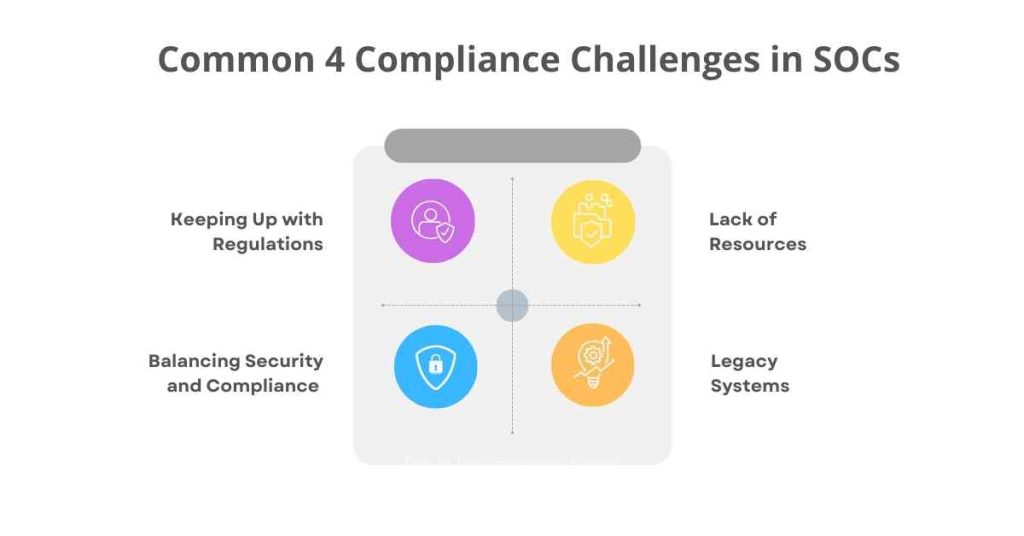
1. Keeping Up with Regulations
Compliance laws are constantly changing, and keeping track can be challenging. It’s vital to stay updated with the latest legal requirements that affect your SOC.
2. Balancing Security and Compliance
Ensuring robust security without breaching compliance can be tricky. Sometimes, the need for quick incident response conflicts with strict compliance guidelines, and striking the right balance is essential.
3. Lack of Resources
Smaller SOCs often face resource limitations, making compliance harder to achieve. Outsourcing certain compliance tasks to experts can ease this burden.
4. Legacy Systems
Older technologies may not meet modern compliance standards, so upgrading or isolating these systems is essential to remain compliant.
Tools and Templates to Simplify Compliance
One way to ease the burden of compliance is by using pre-built templates and automated tools. For example, using ISO 27001 templates or PCI-DSS checklists can simplify many compliance tasks.
Tools like Nessus (for vulnerability scanning) or Splunk (for log management) can help automate your efforts, saving time and ensuring accuracy.
Conclusion
Ensuring compliance in your SOC isn’t just about avoiding fines—it’s about protecting your business and earning customer trust.
By understanding the regulations, building a strong framework, training your team, and regularly auditing your processes, you can ensure that your SOC not only remains compliant but is also robust and effective.
FAQs: Ensuring Compliance Within Your SOC: What You Need to Know
1. What is compliance in a SOC?
Ans: Compliance in a SOC refers to the adherence to a set of laws, regulations, standards, and guidelines that govern the handling, storage, and transmission of sensitive information. Compliance is not just about following rules; it’s also about protecting your organization’s data and reputation.
2. Why is compliance important in a SOC?
Ans: Compliance is essential in a SOC for several reasons: avoiding regulatory penalties, protecting sensitive information, maintaining customer trust, improving security posture, and enhancing reputation.
3. What are the challenges of ensuring compliance in a SOC?
Ans: The challenges of ensuring compliance in a SOC include: an evolving regulatory landscape, limited resources, complexity of technology, and insider threats.
4. What are the best practices for ensuring compliance in a SOC?
Ans: Best practices for ensuring compliance in a SOC include: developing a compliance framework, conducting regular audits, implementing security information and event management (SIEM) systems, providing training and education, and implementing a continuous monitoring program.
5. What compliance regulations and standards should organizations be familiar with?
Ans: Organizations should be familiar with compliance regulations and standards such as the General Data Protection Regulation (GDPR), the Health Insurance Portability and Accountability Act (HIPAA), the Payment Card Industry Data Security Standard (PCI DSS), the National Institute of Standards and Technology (NIST), and International Organization for Standardization (ISO).
6. How can organizations benefit from ensuring compliance in a SOC?
Ans: Organizations can benefit from ensuring compliance in a SOC by: improving their security posture, enhancing their reputation, reducing costs associated with non-compliance, and improving business agility.
7. Who is responsible for ensuring compliance in a SOC?
Ans: Ensuring compliance in a SOC is typically the responsibility of a compliance team that includes IT professionals, security professionals, and compliance professionals.
8. How often should organizations conduct audits to ensure compliance in a SOC?
Ans: Organizations should conduct regular audits to ensure compliance in a SOC, ideally on a quarterly or annual basis, or as required by regulatory requirements.
9. What technologies can organisations use to streamline compliance processes?
Ans: Organisations can use compliance-focused technologies such as compliance management software, security information and event management (SIEM) systems, and continuous monitoring tools to streamline compliance processes.
10. How can organisations stay up-to-date with evolving compliance requirements?
Ans: Organizations can stay up-to-date with evolving compliance requirements by attending industry conferences, participating in compliance groups, subscribing to compliance newsletters, and following regulatory agencies’ websites and social media channels.

